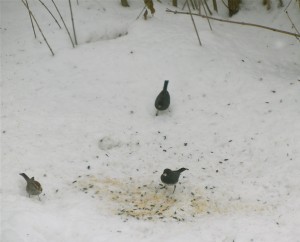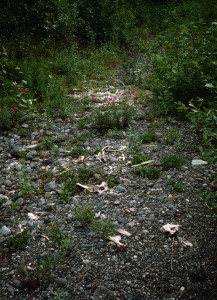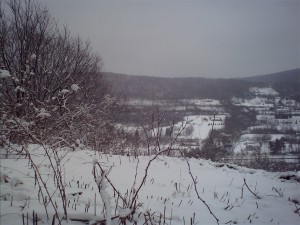Jan 27 2011
Surviving the Cold
 Monday morning we awoke to frigid temperatures here in the North Country. Thermometers registered seventeen below zero in Saint Albans, and even colder in outlying towns. That’s the coldest it has been in years. That’s cold enough for spit to freeze seconds after hitting the ground. Furnaces worked overtime, everyone bundled up, and some cars wouldn’t start. No one went anywhere they didn’t have to go.
Monday morning we awoke to frigid temperatures here in the North Country. Thermometers registered seventeen below zero in Saint Albans, and even colder in outlying towns. That’s the coldest it has been in years. That’s cold enough for spit to freeze seconds after hitting the ground. Furnaces worked overtime, everyone bundled up, and some cars wouldn’t start. No one went anywhere they didn’t have to go.
The cold snap lasted three days. Now we’re back to normal temps – back to days with 20-25 degree highs, that is. Yet people complain. It’s midwinter, the snow is piled high and sub-freezing temps continue unabated.
I’m just about to start complaining myself, then I look out my kitchen window. A few feet away from the warmth that I enjoy, a dozen birds are fighting for survival. Literally.
Sparrows, finches, juncos and chickadees – they all take what they can from the bird feeders dangling from the naked branches of an old lilac bush before some other bird beaks them away. Others vie for the seeds that have fallen to the ground. Still others peck at the suet.
They all look fat and healthy, but looks can be deceiving. Their feathers are puffed up, providing maximum insulation against the cold. Most of their kind flew south for the winter, but these few decided to winter over. Why? Judy and I put up our feeders late last month, long after the migration ended. What would become of these birds if there weren’t any feeders? I shudder to think.
Like most people who spend their hard-earned money feeding wild birds, we enjoy seeing some sign of life out our kitchen window. We especially enjoy the bright red cardinals and charming woodpeckers, but any bird will do. Seeing them makes winter seem temporary. The snow will melt and the grass will green again, no doubt. It’s just a matter of time.
That said, I can’t help but wonder how a winged creature weighing only a few ounces can survive the punishing cold, day after day for months on end. It seems highly unlikely that any of them will make it through. Yet somehow most of them do.
Some wild animals can survive the worst conditions – conditions that would make the healthiest of domestic creatures keel over in a matter of days. I can’t help but admire scrappy birds even while watching them fight over crumbs. Then I turn away from the window, sip my hot tea, and return to my indoor work happy that I’m not one of them. As long as my furnace keeps working and my cupboards are full, I’ve got it made.




